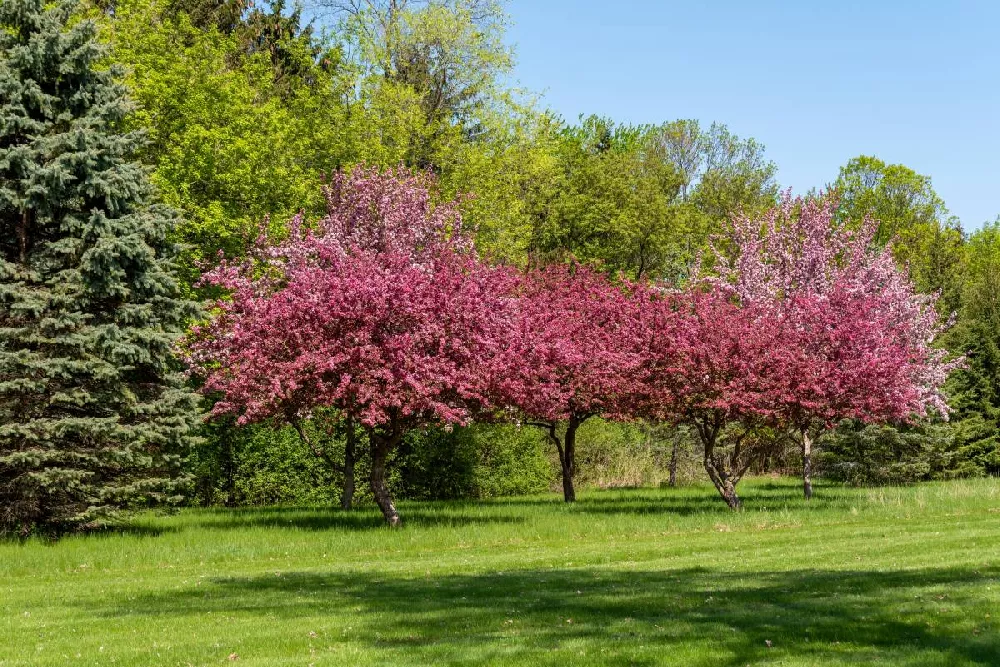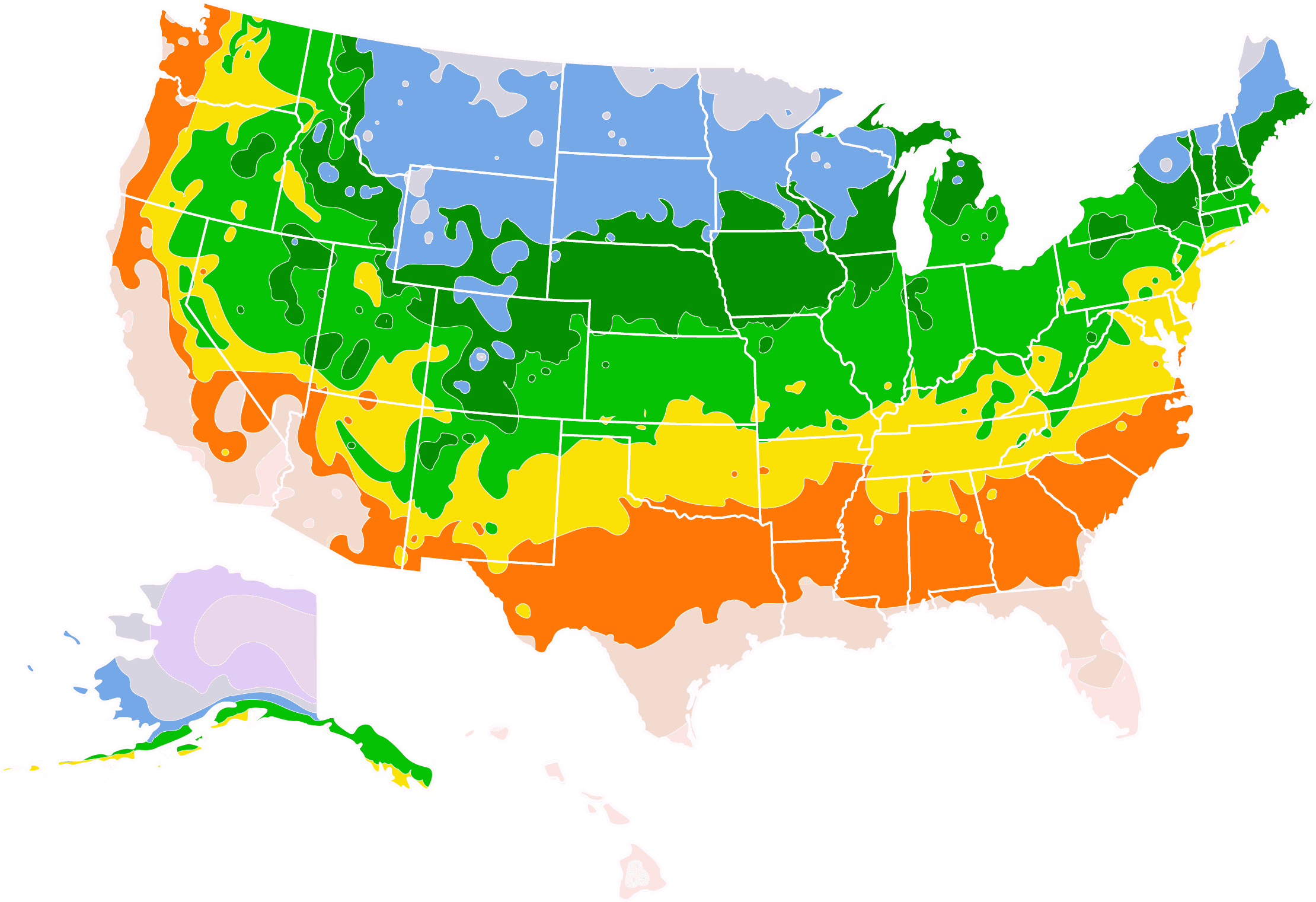- Home >
- Flowers >
- Trees and Plants with Pink Flowers >
- Show Time™ Crabapple Tree
Show Time™ Crabapple Tree for Sale - Buying & Growing Guide
- Ships in 1-2 days
- 1-Year Warranty Eligible
- Pots or accessories are not included unless specified in the product options.
Shipping Details:
Once your order is shipped, you’ll receive an email with a tracking number and estimated delivery date. Most orders ship immediately, but some items are seasonal and may only ship in spring or fall. These products are noted on the website.
The Show Time™ Crabapple Tree is one of the best ornamental trees that you can own if you want to add many dark pink flowers to your landscape during the spring. Known botanically as Malus ‘Shotizam,’ the Show Time™ Crabapple Tree holds many brilliant blooms early in the season that are as impressive as any others. Later in the year, those flowers give way to a set of fruits that are just as lovely.
- The Show Time™ Crabapple Tree has dark pink flowers in the spring.
- The fruits of this tree are bright red and persist for many weeks.
- This tree has a fantastic ability to attract birds, bees and other pollinators.
Plant Care
Sunlight

The Show Time™ Crabapple Tree can live in locations that receive six hours of sunlight per day or more.
Watering
Typically, you should water a Show Time™ Crabapple Tree about once per week throughout the growing season.
Fertilizing

Apply a balanced fertilizer once per year during the early spring months.
Planting and Care
Planting instructions
The Show Time™ Crabapple Tree should grow in an area of full sunlight, meaning that the location receives at least six hours of direct sunlight per day. This tree also prefers soils that are slightly acidic with good drainage and a reasonable amount of nutrients. To plant a Show Time™ Crabapple Tree, dig a hole that is twice as wide as the root ball and deep enough that the tree’s root flare rest at or just above the soil’s surface once planting is complete.
Watering and nutrients
After you plant a Show Time™ Crabapple Tree, you should water it multiple times per week to maintain consistent soil moisture and aid root establishment. Following the first season, you can reduce your watering schedule to about once per week and maintain that rate throughout the rest of this plant’s life. Regarding fertilization, it is best to give your Show Time™ Crabapple Tree a single annual feeding of a balanced fertilizer during the early spring months.
Pollination
The Show Time™ Crabapple Tree is a self-fertile plant, meaning that you need only one to produce fruits that relies on insects to conduct pollination. Since the springtime flowers of this plant are so good at attracting those insects, pollination typically occurs easily. Following successful pollination, your Show Time™ Crabapple Tree will produce a set of red fruits that will dangle from the branches for many weeks during fall and early winter. In the case that you plant multiple trees near one another, you can expect cross-pollination to occur, often resulting in much larger fruit production in each plant.
Pruning
Most of the pruning you do for your Show Time™ Crabapple Tree should take place during the winter when this plant is in a dormant growth phase. At that time, you should perform light pruning to remove dead, damaged and diseased limbs and thin the canopy as needed. Later, during this plant’s spring bloom period, you can deadhead spent flowers to encourage more blooms to open. Fortunately, this plant has a naturally pleasing shape, which means you won’t need to spend much time shaping it.
Pests, diseases and animals
Unfortunately, most crabapples can encounter disease issues in their lives. Some of the most pervasive of these problems are apple scab and cedar apple rust, the latter of which occurs when you grow this plant near a cedar tree. Along with those potential infections, a crabapple can also have pest problems. Some of the most common crabapple pests are aphids, scale insects and mites. However, with that said, the Show Time™ Crabapple Tree is often better at resisting pests and diseases than other crabapples.
Harvesting
Harvest is not a typical goal for those who grow the Show Time™ Crabapple Tree. However, this plant’s fruits are edible, and there is no reason why you cannot pick them and enjoy them in your kitchen. The ripe fruits of this tree will be red and will dangle from the branches throughout fall and early winter. Although these fruits are quite sour in their raw form, they are much more enjoyable when you make them into jam.
Achieving maximum results
Like many crabapples, the Show Time™ Crabapple Tree will likely produce some suckers from the base of its trunks. If that occurs, you should always remove those suckers during your winter pruning, as suckers take up vital growing energy while not contributing to your plant’s overall structure and appearance. Also, those interested in harvesting fruit from this tree may want to consider covering their trees with netting during the fall to prevent birds from eating the fruits before you have a chance to pick them.
FAQs
How large does the Show Time™ Crabapple Tree grow?
The Show Time™ Crabapple Tree typically grows to a height of 20 to 30 feet tall and a spread of about 15 to 20 feet wide once it reaches a mature age. It often does not take relatively long for a Show Time™ Crabapple Tree to reach this size as this plant has a fast growth habit and can add as much as two feet of new growth or more per growing season.
Is the Show Time™ Crabapple Tree cold hardy?
The Show Time™ Crabapple Tree is able to survive in hardiness zones four through eight and can withstand temperatures that reach as low as -20 degrees Fahrenheit. That ability to adapt to the cold allows gardeners in nearly every one of the lower 48 states to grow this plant with ease, as long as the soil and light conditions in their specific growing location are correct.
Is the Show Time™ Crabapple Tree a messy plant?
As is the case for all popular crabapple varieties, the Show Time™ Crabapple Tree is a comparatively messy plant. In late spring, this tree will drop its spent flower petals to the ground. In the fall, this plant will drop its deciduous leaves, which you'll also need to clean up if you want to keep your garden tidy. Additionally, when the fruits of this plant land on a paved surface, their juices can cause staining that is hard to get rid of.
Compare Similar Products
You can't add more Product Name - Product size to the cart.
OK








